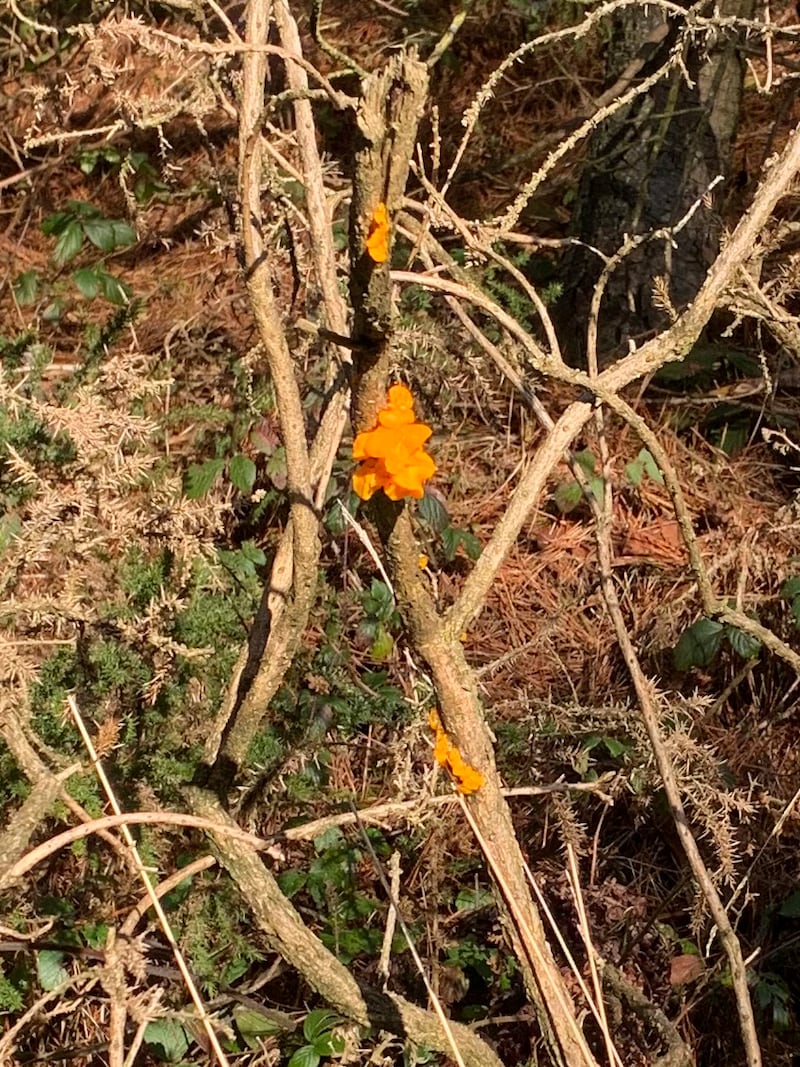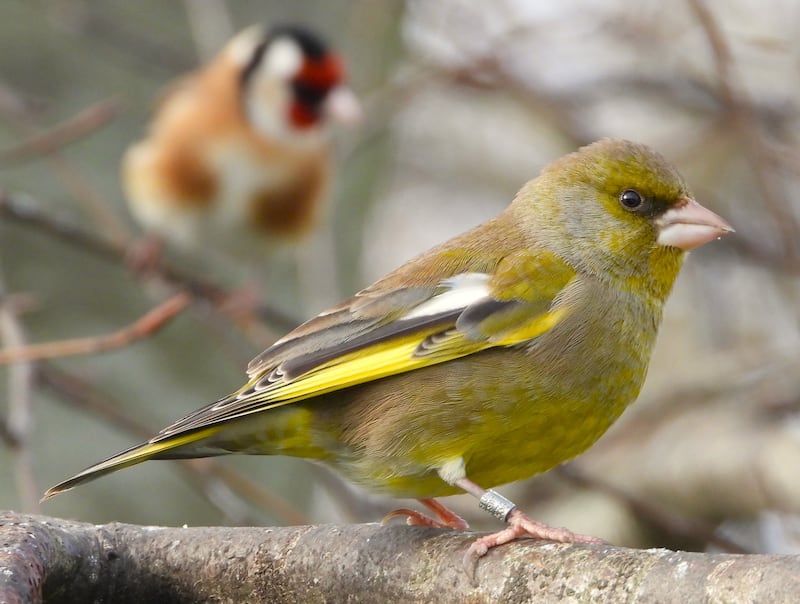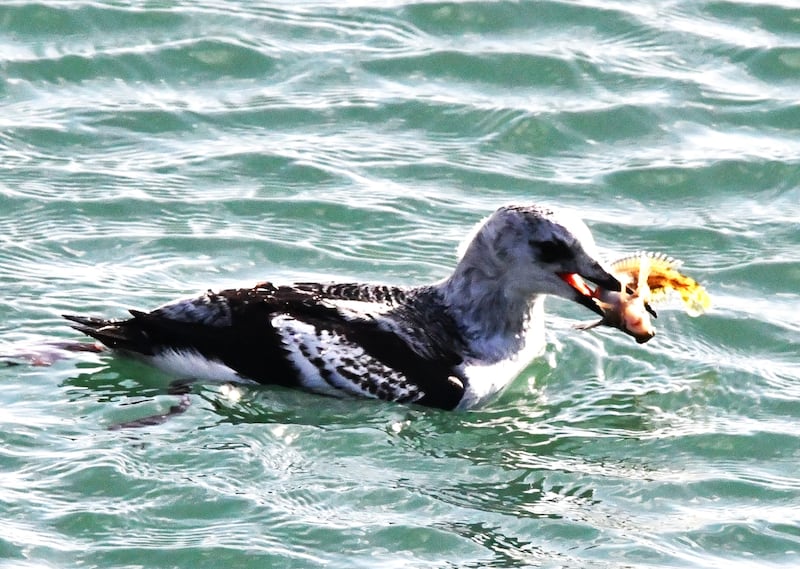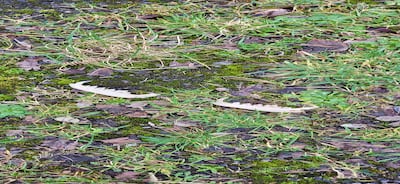I found this washed up on South Beach, Greystones. It was approx 8-9cm long and almost translucent. – Lynn Bellows, Co Wicklow
It is the Lesser Sand Eel. It can grow to 20cm in length and it has a pointed head with a lower jaw longer than the upper. These fish swim in large shoals in the shallow waters near the shore. They seem to shine in the water as their bodies are covered in small silvery scales. They are a vital food source for seabirds, particularly puffins. Increasing water temperatures and overfishing by commercial fisheries is reducing the availability of sand eels and having a negative impact on the breeding success of our puffins.

During a walk of Forth Mountain in Wexford recently, I spotted this small bright orange growth on a dead branch of gorse. It looks like some kind of fungus. Can you tell me anything about it?
Michael Lunt, Co Wexford
It is the Yellow Brain Fungus, Tremella mesenterica. This is one of the jelly fungi and has a gelatinous fruitbody that feels greasy and slimy when wet. It can grow on dead hazel branches as well as those of furze. It becomes more orange-coloured as it dries out. It is widespread and common and occurs all year.

I’ve never ever seen a ring on a greenfinch before. What would the purpose be?
Niall Mac Neill, Co Dublin
This ring has been put on the greenfinch by a licensed bird ringer, most likely while it was still a nestling. It is a valuable way to learn about the lifespan of birds, their annual survival rates, possible migratory movements and dispersal. The British Trust for Ornithology runs the bird ringing scheme of Britain and Ireland so you should report it, with as many details as you can provide, particularly the code on the ring, to them at recoveries@bto.org.

I would appreciate the identification of the fish. Photo taken at Machaire Uí Rabhartaigh, Co Donegal. The bird appeared to have difficulty attempting to eat the fish.
Maitiú Ó Murchú
A classic example of biting off more than you can chew. Kevin Flannery of Dingle Aquarium tells me that it is a Tompot blenny. These are occasionally found at the bottom of the shore on a very low tide as they live among the rocks and the seaweeds. Unusually, for fish, the male has a den where he guards the eggs from several females until the larvae are about a month old. The dorsal fins of these blennies have sharp spikes that, obviously, the poor gull didn’t realise. Gulls are clever enough though, and presumably it will learn by this mistake and leave blennies severely alone in future.

I found these today on a road to a bog near me, any idea which animal they belong to?
William Roberts, Co Galway
These are the two lower jaw bones – mandibles – of a carnivorous mammal. The long, canine tooth occurs at the front end of each jaw and is long and sharp for stabbing, slashing and grasping their prey. The rest of the teeth are the premolars and molars. Carnivores have a particular innovation that involves the last upper premolar and the first lower molar on each side of the jaw. These teeth are enlarged and particularly sharp, and shear past each other with a powerful scissors-like action that allows the animal to slice through flesh, hide and tendon. These could be the jaw bones of a fox or indeed those of a dog. I would not recommend that you put your hand into your dog’s mouth to check its dentition – if you want to get it back out again in one piece.
Please submit your nature query, observation, or photo with a location, via irishtimes.com/eyeonnature















